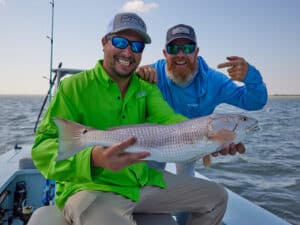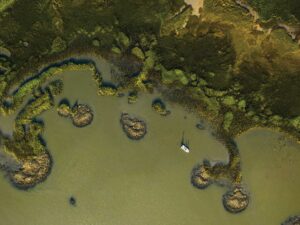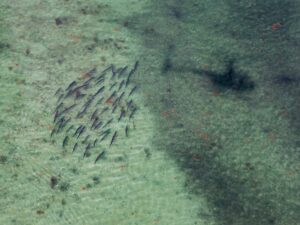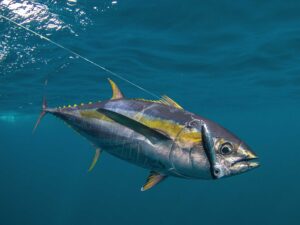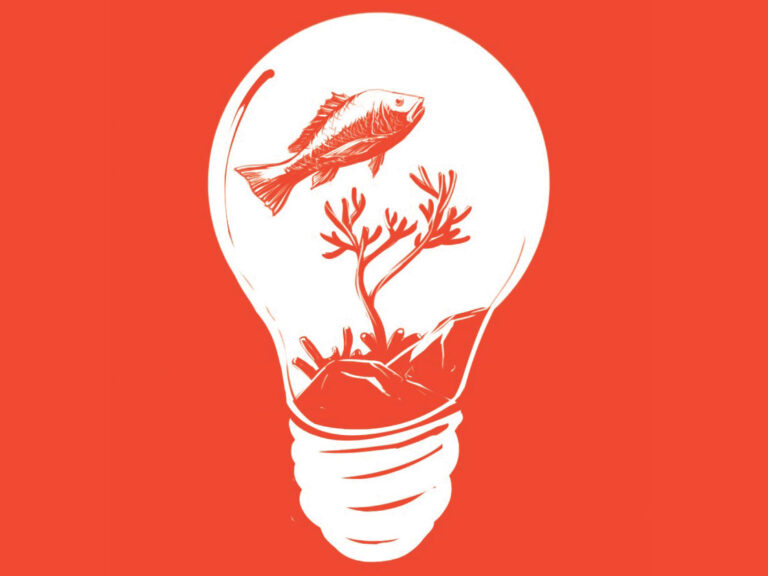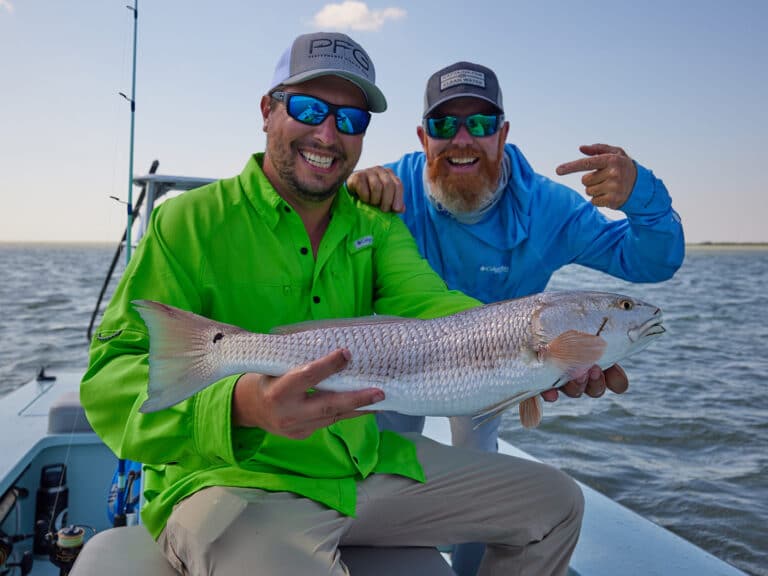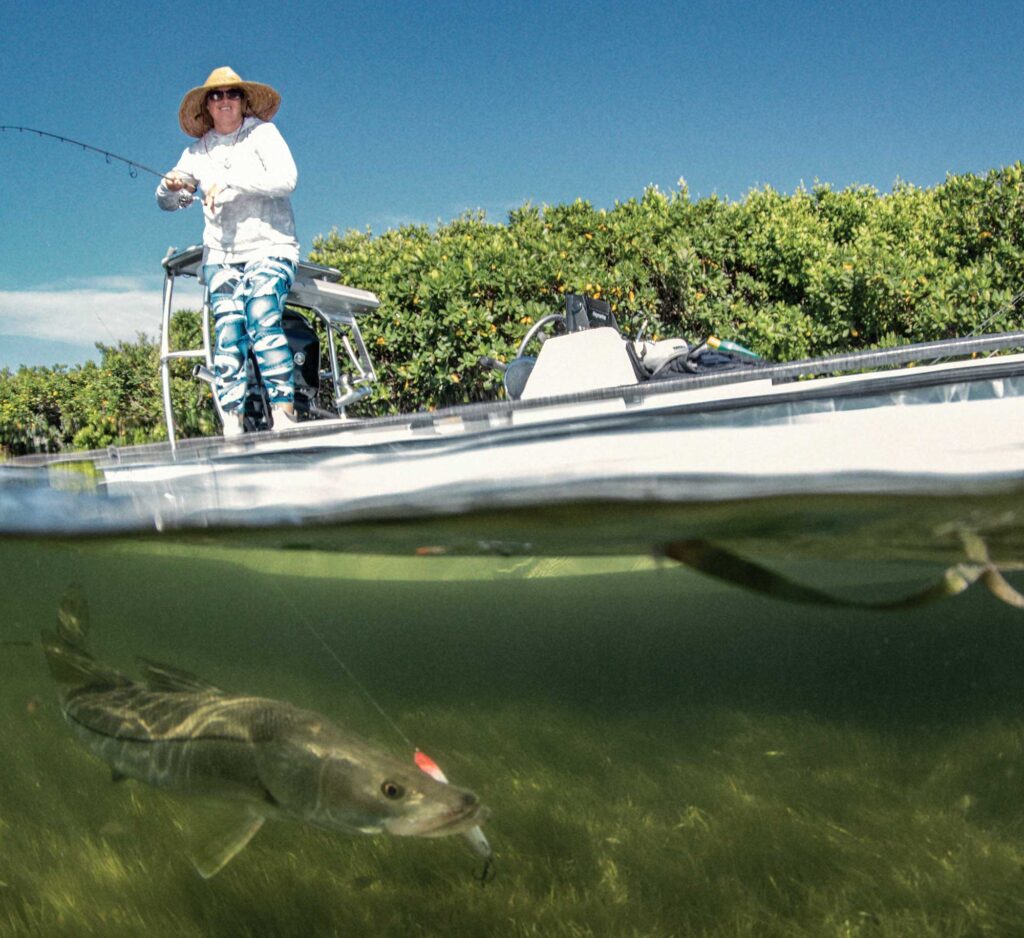
Winter is a relative term along Florida’s Treasure Coast. Yes, the temperatures are a little cooler than normal, and you’re likely to see a social media influencer or two wearing puffy designer vests, yoga pants and fuzzy ankle boots along Stuart’s trendy boulevards. But for practical purposes, it really means sailfish surfing Gulf Stream waves and snook hunkered down in sheltered canals and mangrove sloughs west of A1A. Once tax season shifts into full panic mode, everything changes. Those same snook are pulsing toward the area’s inlets to gobble down a buffet of bait, which makes spring the premier season for light-tackle enthusiasts.
“March and April are two of my favorite months of the year,” says Capt. Ed Zyak, a native guide and inshore expert. “Snook are transitioning from their winter haunts in the back bays, moving into open water and feeding aggressively. Throwing topwater lures is a great way to catch them, oftentimes all day long. Watching a snook flare and blow up on a plug is awesome. The bait is moving into the river, and it’s magic when the snook turn on and things start happening.”
Zyak says ideal conditions align once the water temperatures settle into the mid-70s range, with warm, light southeast winds. The appearance of white butterflies and floating red flowers fallen from poinciana trees are natural signs he looks for that signal a good snook bite. Zyak favors new-moon tides with strong flow, focusing on the bottom half of the outgoing or the first of the incoming water. Full-moon phases are generally slower, with the exception of a brief period early in the mornings.
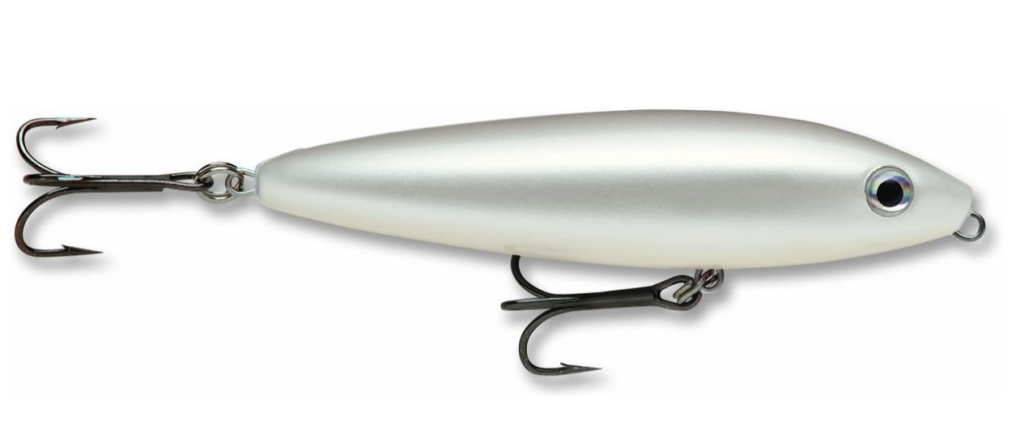
“Especially on the flats, that low water concentrates the fish and leaves fewer places for them to hide,” he explains. “Smaller baits are more common early, so I stick with smaller lures. For topwaters, I love Rapala Skitter Walks in natural-looking patterns in the 08 size. Black-and-silver or bone are the top-producing colors, also Arkansas glow with green backs and glow bellies. I use a lot of shad tails in the spring too, rigged with 1/8- or 1/4-ounce jig heads, depending on the depth and current. The smaller profiles give good vibrations and match the baits for a bite-size morsel.”
For open water and the flats, Zyak arms his clients with 3000- or 4000-class Shimano Stradic spinning reels matched to 7-foot or 7-foot-6-inch medium-heavy Teramar XX rods. The reels are loaded with up to 15-pound-test braided line with 30-pound fluorocarbon leaders. If he’s baitfishing around docks and bridge pilings, he bumps the arsenal up to 5000 or 6000 reels with heavier 7-foot rods. Live bait is very effective for chumming and generating strikes, Zyak says.
Get the Gear Here
“My No. 1 choice for live bait is pilchards, every time. Capt. Mike Holliday got me started when he gave me a cast net and taught me how to throw it when my son was born. He’s the reason why my arm and shoulder are sore after all these years,” he adds with a laugh.
Read Next: Seven Deadly Snook Fishing Lures
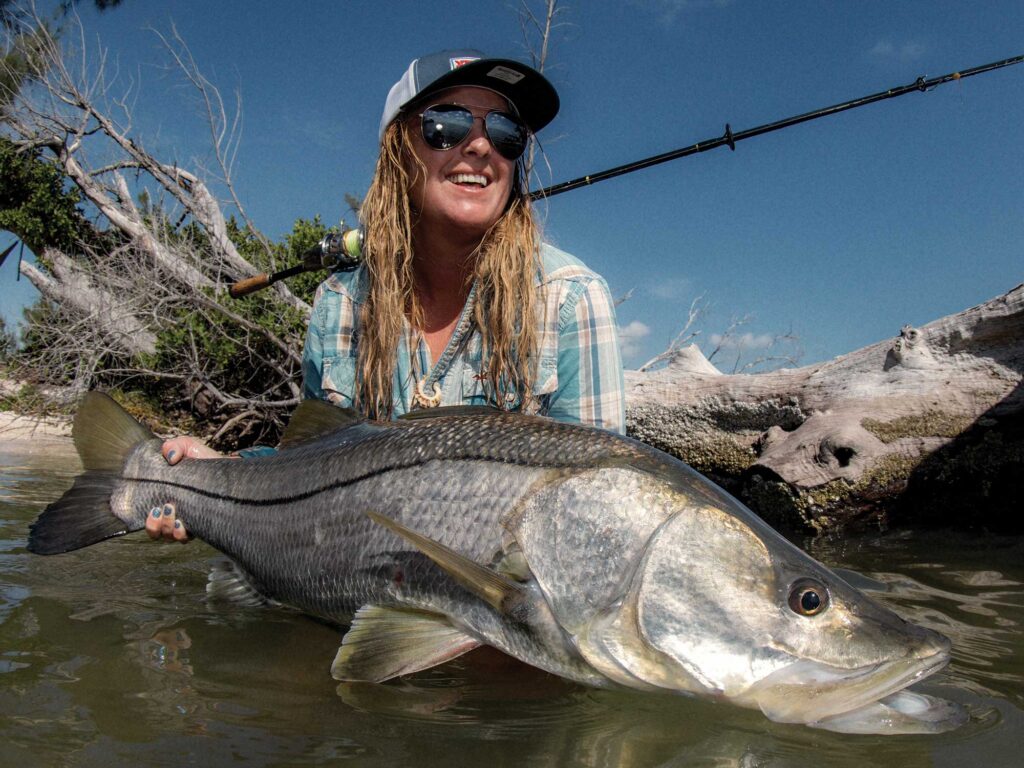
Zyak only cast-nets the pilchards he needs and leaves the rest, even with big schools of bait. That includes an overage for live-chumming. (He averages one bait per bite.) He squeezes a few and tosses the stunned baits into the targeted zone before offering a hooked pilchard. Terminal tackle includes VMC light-wire circle hooks tied on with a loop knot. The hook sizes, ranging from 2/0 to 5/0, match the bait size to allow natural movement.
“I like to throw a few scouts out in places that I know hold fish,” he explains. “That lets the snook know what’s there and what could happen. Live bait will convince them to eat, even if they are reluctant. It reminds me of my ex brother-in-law. He wouldn’t get up off the couch to make his own sandwich, but if someone walked by and handed him one, he’d eat it. Put a frisky live pilchard in a snook’s face and that’ll trigger a response. You can force a great bite when otherwise you might have given up and rolled on to another spot.”
When scouting for fish, Zyak looks for moving water and signs of life. Mullet schools, pilchards, sardines and birds diving are all prime tipoffs. He also scans for anomalies on the flats. Natural funnels between bars, high and low spots, scattered shell or rock, even a depression 1 foot deeper than the surrounding bottom can hold the quarry.
“Anything that will concentrate bait and make it easier for snook to feed is worth investigating. Many of the spoil islands in the river are boomerang-shaped. The tides will sweep around the points and potholes. Toss a topwater plug or bait and let it drift naturally along with the current. Natural presentations are definitely the most productive.”
Although the Indian River has been subject to water-quality issues the last few years, snook fishing is still good. Sizes have dropped with more pressure, but Zyak says spring-season fish average 24 to 28 inches, with plenty of opportunities for others pushing yardstick dimensions.
Like with other targeted gamefish in clear, shallow water, snook can be wary. Zyak counters that reticence by stalking his prey. He often eases into a zone by boat and then hops overboard to wade into casting range.
“I may have a stretch a half-mile long, but the fish will only be in a 200-yard section. So I’ll float in until I start seeing them, then back off, get out and sneak back in there. I also look for reasons for fish to be in certain areas. When I see baitfish, that’s always a good sign. As the tide drops, little threadfins and pilchards will concentrate in those sloughs and along the edges. Food is the No. 1 reason, and good water movement is the other,” he adds.
“Sometimes you’ll find a group in that deeper stuff, and they’re less spooky than one in a foot of water all by himself. When they’re up that skinny, they’re on high alert, and you’ve got to be on your A game. Toss that plug, and click, click, click, boom! That’s snook fishing, and it doesn’t get any better than springtime in Stuart.”
Travel Planner
Charter Guides
Capt. Ed Zyak, 772-485-3474, jensenbeachfishing.com
Capt. Mike Holliday, 772-341-6105, captmikeholliday.com
Capt. Buddy Kirkhart, 772-341-3204, nightheronlighttacklefishing.com
Where to Stay
River Palm Cottages & Fish Camp is a restored nostalgic retreat near downtown Jensen Beach, right on the Indian River. Offering clean, simple cottages surrounded by lush vegetation, this relaxing getaway also has a dock, boat slips and a Tiki bar. A public ramp is a block away. riverpalmcottages.com
Regulations
Snook is closed December 15 until January 31 and again from June 1 until August 31 in the Indian River zone, which includes Stuart, Jensen Beach, Fort Pierce and Vero Beach. Only one fish per angler per day is allowed, with a slot size of not less than 28 inches or more than 32 inches total length. For the latest snook rules, visit myfwc.com or download the agency’s free smartphone app.

